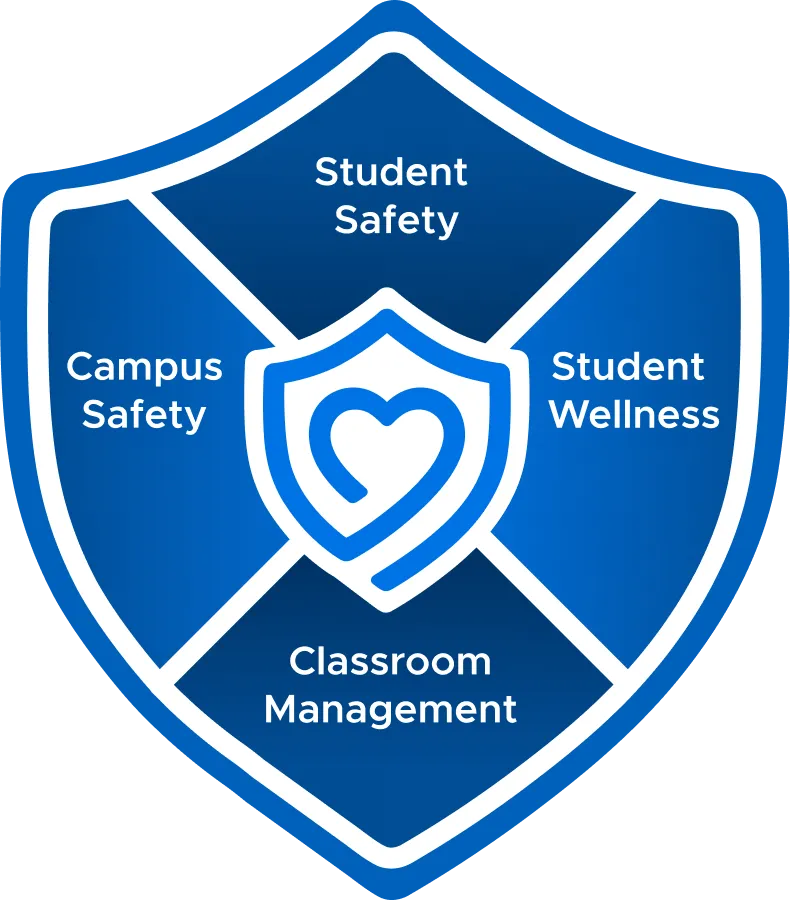
TX students supported
TX schools + districts supported
Staying ahead of legislative changes, funding updates, and district priorities is key to creating safer and more supportive K-12 learning environments. This page consolidates essential resources for Texas schools - from policy information and insights, to grant opportunities and helpful further reading - and is regularly updated to reflect the latest developments throughout the school year.
HB 1481 (2025) (Enacted): Prohibits student cell phone use during the school day.
Districts are responsible for setting secure storage policies and handling exemptions for medical or special education needs.
By fall 2025, all districts must have a formal restricted-device policy in place.
Policies must address storage logistics, enforcement methods, and equity considerations.
Districts should review existing policies on mobile device use and consider how tools like classroom management software can support enforcement.
Clear communication with students and families is key to successful policy implementation.
No direct funding linked to cell phone bans, but related school safety allotments may support implementation infrastructure.
While Texas hasn't introduced new privacy laws for 2025-26, student data protections remain a national priority.
Federal regulations like FERPA and COPPA continue to guide expectations, and many districts are under pressure to go beyond compliance.
Districts must ensure edtech vendors meet privacy standards, particularly when issuing devices or managing cloud-based platforms.
Policies should allow parental access, data correction, and clear opt-in/opt-out processes.
Internal audits and transparency tools can strengthen community trust and help mitigate risk.
While there is no state-specific funding for this area, Texas schools may be eligible for federal grants.
Cyberbullying continues to rise nationwide, especially in middle and high school settings.
While Texas hasn't introduced new 2025-26 policy updates, many districts are revisiting student conduct codes and digital use policies in light of national best practices.
Schools are expected to train staff and students on responsible digital behavior, off-campus conduct, and reporting pathways.
Updating Acceptable Use Policies (AUPs) and incorporating digital citizenship lessons can help meet community expectations and reduce incidents.
Schools may leverage federal wellness or mental health grants, or SchoolSafety.gov programs that fund digital behavior education.
HB 2377 (Pending): Proposes new grants via the Permanent School Fund for physical and mental health infrastructure.
TEA School Safety Standards Formula Grant (Extended through April 2026): Supports compliance with TEA safety mandates, including cameras, security personnel, and barriers.
$500M Safety Allotment Boost (2025): Part of the state's $8.5B K-12 finance package, doubling the per-student safety funding base.
Districts must continue planning for fall 2025 safety compliance, including physical infrastructure and emergency systems.
The pending HB 2377 may unlock additional funding for resiliency projects and disaster preparedness.
With significantly more per-student safety funding, districts have flexibility to modernize and scale safety systems.
TEA School Safety Standards Formula Grant | Ongoing support for mandated upgrades.
Texas School Safety Center | Provides training and programming to support implementation.
Permanent School Fund-Based Grants (pending HB 2377) | Would support long-term health and safety infrastructure.
Increased Safety Allotment ($500M total) | Approximately $10 per student, with potential for larger district allocations.
SB 649 (Pending): Proposes to expand the scope of the School Safety Allotment to include mental and behavioral health, enabling use for counselor salaries, telehealth, and related programs.
HB 2377 (Pending): Also includes mental health funding within a broader safety and health infrastructure proposal.
If passed, both of these bills would allow districts to use safety funds for teletherapy, school-based mental health staff, and student wellness programming.
Grants will likely prioritize multi-year capacity building and embedded support models.
Federal School-Based Mental Health Services Grants | Up to $3M per district.
Pending Permanent School Fund Grants (HB 2377) | Would create a stable stream for mental health infrastructure.
Texas School Safety Center | Training and resource hub for mental wellness and threat prevention.
SchoolSafety.gov | Central source for grant discovery.
There's growing national emphasis on transparency and parental visibility, especially around student wellbeing, device use, and online activity.
While not currently legislated in Texas, family engagement is an increasingly critical part of district policy and technology planning.
Districts should offer parent-facing portals, regular student activity reports, or wellbeing alerts to keep families informed.
Clear protocols for notifying families in cases of mental health concerns, discipline incidents, or digital misconduct are encouraged.
While not funded directly, mental health or school safety grants may support training, tech tools, or communication systems that improve parent–school partnerships.
Consider including these transparency features in broader grant applications tied to student support.
The 2025-26 School Readiness Guide is a practical planning tool designed to help K-12 leaders navigate the ever-evolving landscape of student safety, mental health, and digital wellbeing.
The Securly Shield brings together holistic K-12 solutions that empower Texas districts to proactively protect students, support mental wellness, and drive student engagement through smarter, safer technology:

TX students supported
TX schools + districts supported